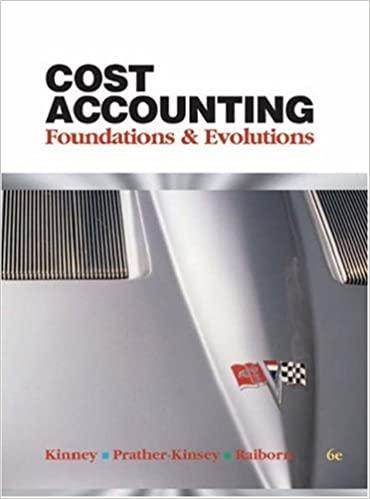Greenwich Engineering is a typical manufacturing company. Over the last decade there has been an increase in product diversification and factory automation and a reduction in the direct labour hours worked each year. Competition has increased and the company wants to build a reputation as a global leader in implementing modern manufacturing methods. To be successful the senior managers recognize that they must improve existing management accounting systems. The Charlton Division has a standard costing system that was first introduced in the 1960s. Recently the managing director asked all managers for their comments on the existing management accounting system and to identify what changes they would like to see in the future. One group of managers stated their concerns that the management accounting system has failed to evolve in a manner compatible with a changed technological and competitive environment. Several of the senior managers are now predicting that the standard costing system will have a less important role in the future and it will not be used to judge managerial performance. This implies that variance analysis is less relevant compared to 20 years ago. Another group of managers still believe there is a need for a standard costing system. In their view variance analysis has been important for many years and will continue to be important for judging managerial performance. Data from existing standard costing system Charlton began production of a new product last month. The company has established the following standard for one unit of the new product Cost data $14 $15.0 S17 During the first month of production 2,000 units were produced Standard quantity or hours Standard price or rate Actual price or rate Direct materials 3Kg Direct labour hours $17.5 Total direct material cost = $87,000 Total direct labor cost = $350,000 It was difficult to get managers to agree the standard, as the new product is significantly different to existing products. This is a typical problem faced by managers. Furthermore, the materials purchased are from a new supplier and the labour needed additional training. In recent years the division has tried to reduce the number of suppliers and improve the quality of the raw materials. If a new supplier is used there are often short-term problems with quality and higher failure rates for products. The management accountant has done some research and found some information on alternative suppliers that was not available when the original standard was agreed. She estimates that the material could have been purchased at $14.80 per kg. There is often conflict between the management accountant and the purchasing department as prices for raw materials is not stable over time. The purchasing manager has repeatedly complained that he does not have the resources to constantly monitor changes in raw material prices. Data on comparative labour costs is also available. Locally the market rate for labour is 10% less than the standard rate per hour of $17 paid by Charlton. The management accountant has also obtained some data on the relative productivity of direct labour. She estimates that the competitors work on the assumption that 8.5 hours of direct labour hours are required for each unit. Question1 Calculate the planning and operating variances and discuss the problems of identifying the controllable variances. Question 2 Discuss the shortcomings of standard costing systems in a modern manufacturing environment








